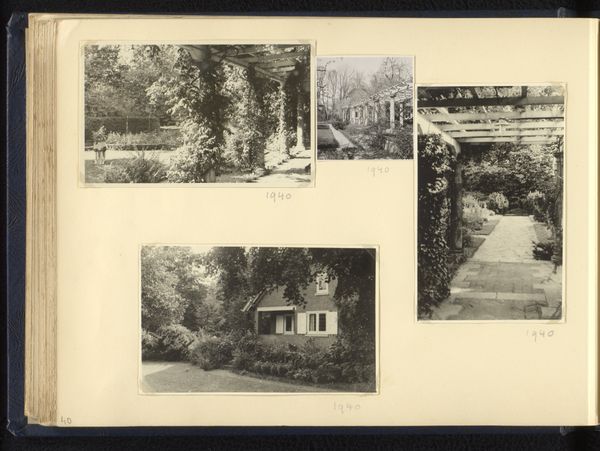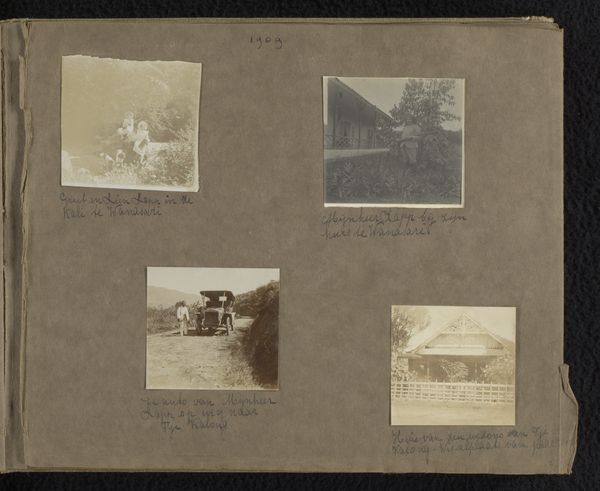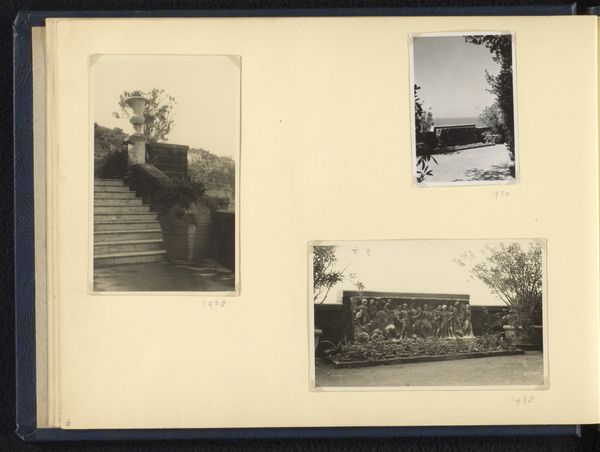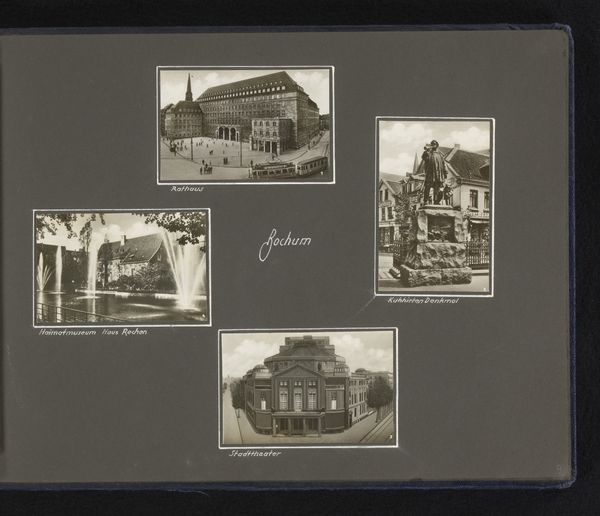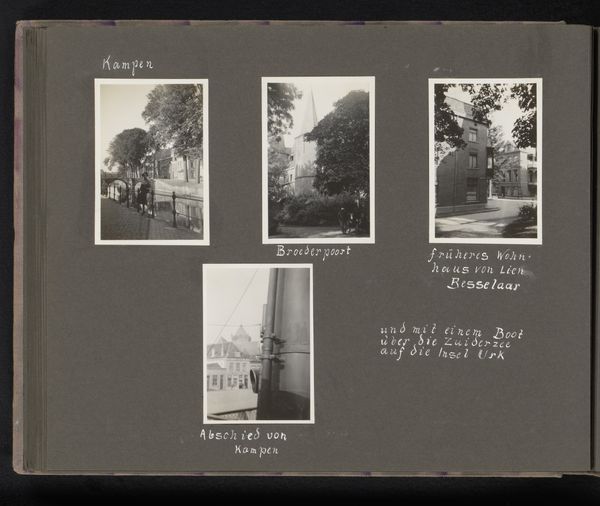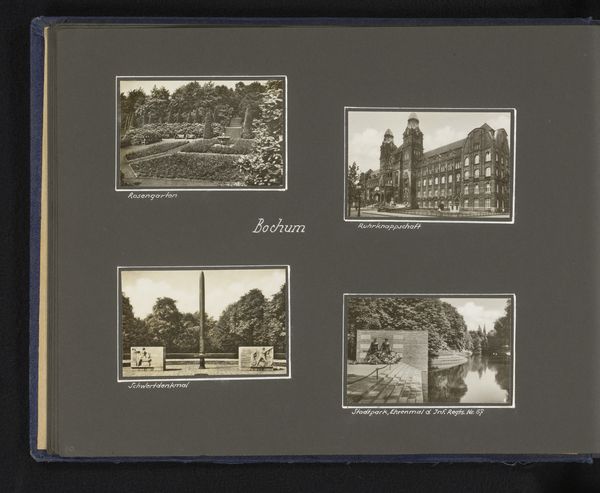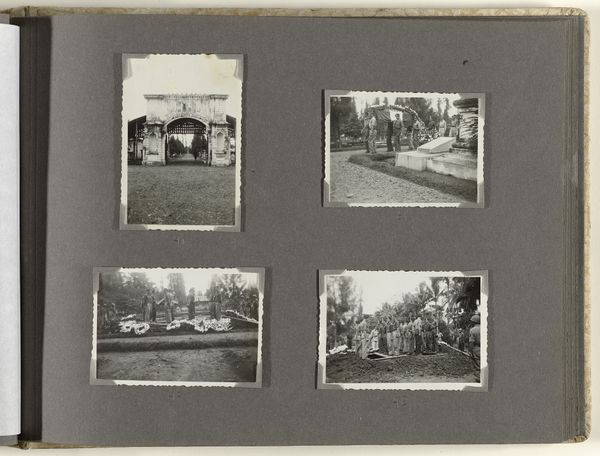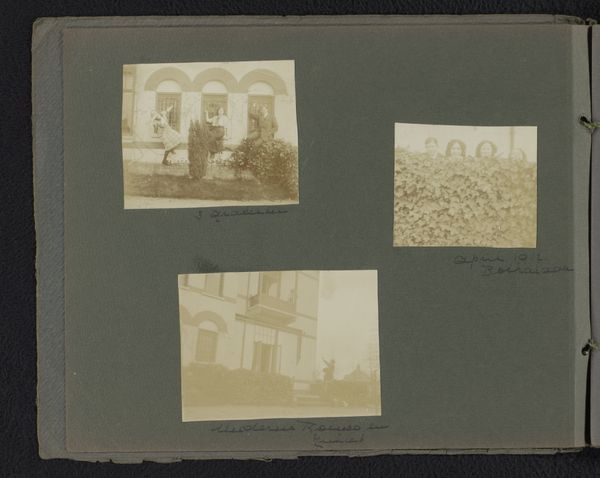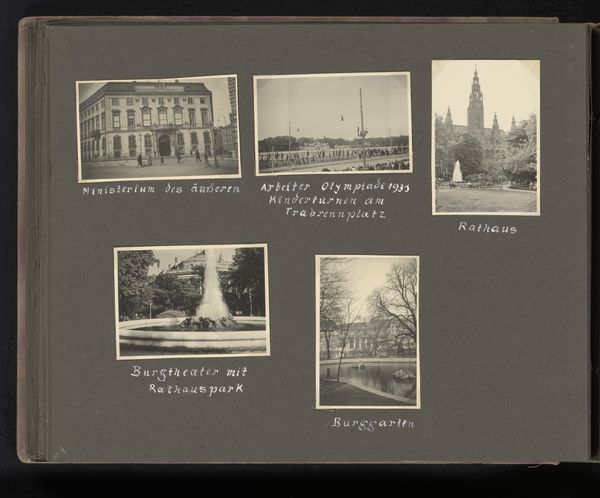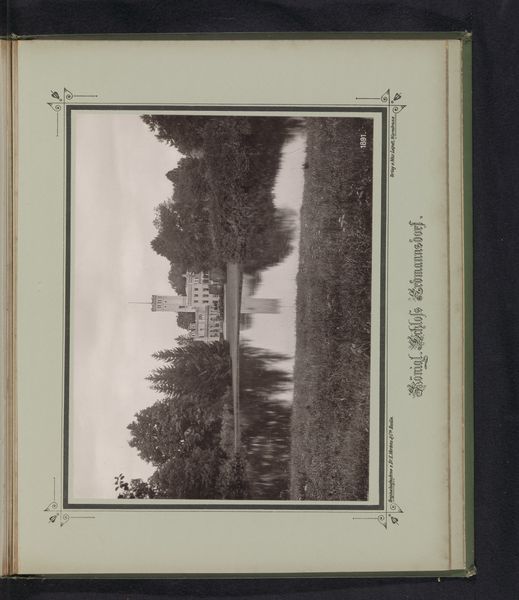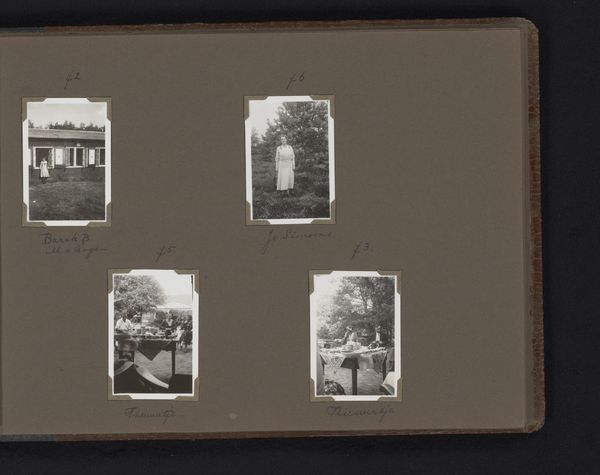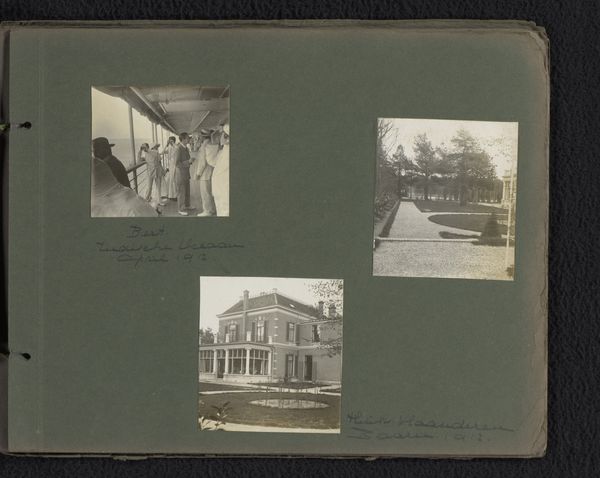
#
pale palette
#
muted colour palette
#
desaturated colours
#
light coloured
#
white palette
#
desaturated colour
#
unrealistic statue
#
visual diary
#
pale shade
#
paper medium
Dimensions: height 90 mm, width 60 mm, width 220 mm, height 290 mm
Copyright: Rijks Museum: Open Domain
Curator: This fascinating photo album page is titled "Opleiding in Bocklemünd", made in 1939. It’s currently held at the Rijksmuseum. Editor: Immediately, I’m struck by the somber, almost clinical feel. The monochrome palette and grid-like arrangement of the photographs create a sense of detached observation. Curator: Precisely. It's a visual record. Looking closer at the photographs, we can see architectural studies—a church spire, a sturdy brick building, an arched gateway, probably from in and around Bocklemünd, which is now part of Cologne. Editor: I see that; the materials used in each structure, the local stone, brickwork are on full display. Each chosen scene looks deliberately practical, and very working class, especially with the bridge on the road. No fancy estates, but things built for purpose, it hints at local labor involved in the making. Curator: Right, these images seem to be very deliberate in capturing the local building materials available and, perhaps, document a specific architectural curriculum or educational exercise during this period? Keep in mind this album was assembled on the cusp of the second world war. The word ‘Krieg’ above one of the photographs adds to this. Editor: Indeed. This has implications for how institutions might’ve been training citizens, how the government might’ve had an interest to standardize buildings in an impending state of conflict. Curator: Absolutely. We can further interpret the album page format as a tool itself—a standardized method of documentation used and regulated. And that inscription— "Sept 39"—ominously close to the start of the war… This visual diary presents interesting questions about pre-war documentation. Editor: The scale of this book feels deliberately intimate. A hand held view on working, documenting on the brink. Thanks to your historical insight, that desaturated palette does not simply represent muted aesthetics, but becomes rather a symbolic material statement—almost as though any element of unnecessary ornament has been removed in the drive for raw visual accounting. Curator: It has definitely given me something to think about as well; seeing how this album page has allowed us to explore the intersection of institutional practice and social unrest and how buildings played an inevitable part of pre-war Germany. Editor: Definitely; each frame speaks silently, a testimony to materials, labour, a world unknowingly staring into the storm.
Comments
No comments
Be the first to comment and join the conversation on the ultimate creative platform.
